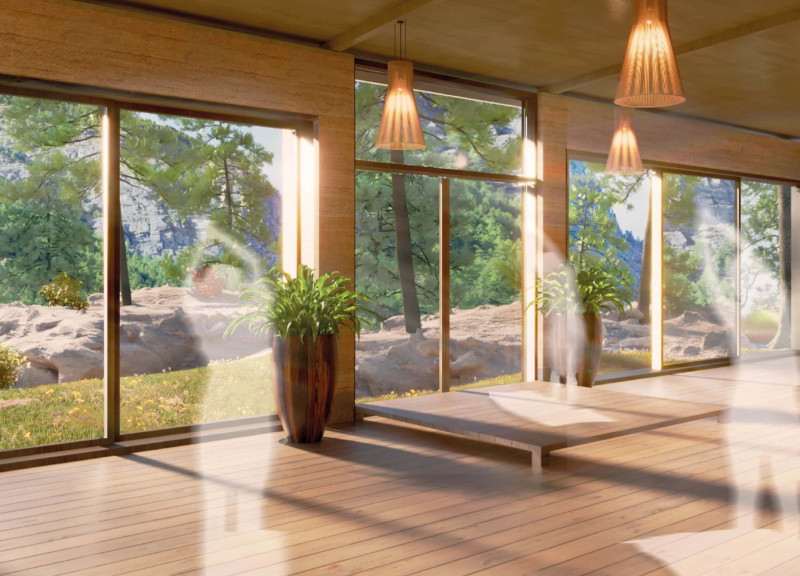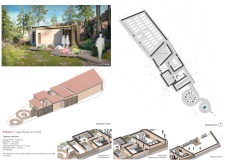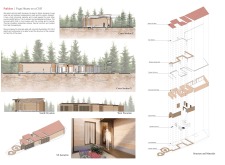5 key facts about this project
The Pathless Yoga House on a Cliff is situated in a dramatic natural landscape, designed to support spiritual growth and community wellness. Emphasizing the principles of the heart chakra, the building creates an environment that encourages personal reflection and social interaction. The overall design connects users to both their inner selves and the surrounding nature, making the space suitable for yoga and meditation practices.
Spatial Organization
Inside, the layout is carefully arranged to lead users on a journey through different areas. The varying heights of the spaces create distinct feelings, moving from cozy, intimate rooms to larger, airy environments. The meditation room is the highlight, intended to foster a sense of openness and freedom as practitioners engage in meditation. This design approach promotes both individual contemplation and group participation, allowing for a varied experience.
Functional Program
The yoga house includes several important spaces that cater to both community and private needs. These spaces are a storage room, restrooms, a kitchen, dressing rooms, and quiet Zen gardens, alongside the main meditation room. The meditation area is large enough to accommodate 30 participants and two instructors, supporting group practices while still allowing for moments of solitude. The building features clear circulation paths that enhance accessibility, ensuring an easy flow from one space to another.
Sustainability and Materiality
Sustainability is a key aspect of the design, evident in the use of sloped roofs. These roofs help manage sunlight and enable a rainwater collection system, reflecting an ecological focus. The primary material is rammed earth, selected for its structural stability and environmental benefits. Using locally sourced soil minimizes the carbon footprint and provides good thermal insulation, creating a comfortable environment for users.
The incorporation of gardens throughout the site deepens the connection between the building and its landscape. These green spaces serve as areas for quiet reflection, enriching the overall experience. The design carefully balances architectural form with its natural surroundings, offering a retreat that invites users to engage with both themselves and the earth.






















































